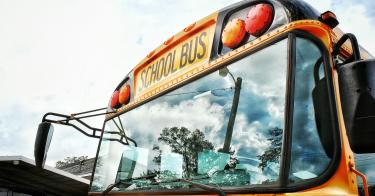“All children in Wyoming should have access to the highest quality education possible,” declared Gov. Mark Gordon, a Republican, in his recent proclamation declaring January 22-28 School Choice Week. “Educational variety not only helps diversify our economy, but also enhances the vibrancy of our community.”
The Wyoming legislature will soon consider a proposal to give families greater freedom to choose learning environments that align with their values and meet their children’s individual learning needs.
Education savings accounts, or ESAs, let families access state funds to pay for private school tuition, tutoring, textbooks, online courses, special needs therapy and numerous other educational expenses. Ten states have already adopted ESA policies, including five in the last two years.
It’s not hard to understand why.
The pandemic—and especially district schools’ response to it—awakened parents to the need for education choice. Unnecessarily long school shutdowns, mask mandates and concerns over the politicization of the classroom have propelled public support for education choice policies, like ESAs, to all-time highs. In a RealClearPolitics poll last year, more than seven in 10 Americans said they supported education choice.
>>> Why Rural Students Need School Choice
But not everyone is on board. The teachers’ unions and their allies are doing everything they can to block families from accessing alternatives to the district school system.
In an effort to peel away votes from Wyoming legislators representing rural areas, opponents of ESAs are arguing that choice policies either don’t benefit rural areas or are harmful to rural district schools.
For example, the union-funded National Coalition for Public Education (NCPE) claims that education choice policies “don’t provide an actual choice for students living in rural areas” because the nearest private school is far away, therefore “students would often be required to endure long, costly commutes.”
Meanwhile, Carol Corbett Burris, the NCPE’s executive director, frets that education choice policies would supposedly create a “death spiral” for district schools “especially in rural areas” because when “kids leave the system, they leave behind all kinds of stranded costs.”
These two claims—that there are no schooling options in rural areas, and that rural schools are imperiled because so many students will leave for those options—are mutually exclusive. They cannot both be true simultaneously. But they can both be—and indeed are—false.
First, as we detail in a new Heritage Foundation report, families in rural areas have access to more education options than ever before.
About seven in 10 rural families nationwide live within 10 miles of a private elementary school. Rural areas are also seeing the rise of microschools, a modern reimagining of the one-room schoolhouse.
Microschool networks like Acton Academy, Adamo Education, Great Hearts, Kai Pods and Prenda are teaching students in small groups, sometimes operating out of homes or church basements. Their approaches vary greatly—ranging from classical to Montessori—but all offer greater flexibility and individualized attention than the traditional classroom environment.
Additionally, high-quality virtual schools are available to anyone with a decent Internet connection—which is becoming increasingly available in rural America. A 2021 survey by the Pew Research Center found that 72% of rural Americans said they have a broadband Internet connection at home, up 19 percentage points since 2016.
>>> The Evidence on School Choice in Rural Areas
Fears that the wide availability of education options would harm rural schools are entirely unfounded. Take Arizona, for example. Arizona has consistently ranked among the top states for education freedom and choice over the past two decades. More students exercise their school choice options in Arizona than in any other state. If choice policies harmed district schools, then Arizona’s rural schools would be falling apart.
In fact, Arizona’s rural schools are improving much more than the national average. From 2007 to 2019, Arizona rural students’ fourth and eighth grade reading and math scores on the National Assessment for Educational Progress increased by a combined 21 points, while scores in rural schools nationally decreased by two points. On the most recent NAEP, post-pandemic, Arizona’s rural students were still up a combined eight points while rural students nationally dropped 17 points from 2007.
Education choice policies like tax-credit scholarships and ESAs expand educational opportunity for rural families while spurring rural district schools to improve their performance.
By embracing education choice policies, Wyoming lawmakers can deliver on the promise of America’s education system and ensure that all children have access to the learning environment that best meets their individual needs and helps them to achieve their full, God-given potential.
This piece originally appeared in the Casper Star-Tribune




